
Michael López-Alegría is an astronaut, test pilot and commercial astronaut with dual nationality, American and Spanish; a veteran of three Space Shuttle missions and one International Space Station mission. He is known for having performed ten spacewalks so far in his career, presently holding the second longest all-time EVA duration record and having the fifth-longest spaceflight of any American at the length of 215 days; this time was spent on board the ISS from September 18, 2006, to April 21, 2007. López-Alegría commanded Axiom-1, the first ever all-private team of commercial astronaut mission to the International Space Station, which launched on April 8, 2022, and spent just over 17 days in Earth's orbit.
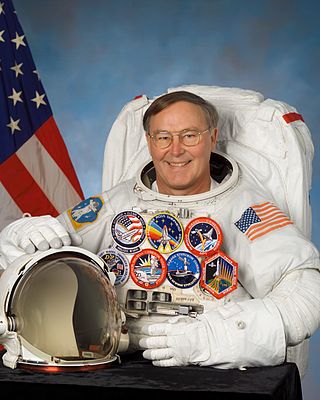
Jerry Lynn Ross is a retired United States Air Force officer, engineer, and a former NASA astronaut. Ross is a veteran of 7 Space Shuttle missions, making him the joint record holder for most spaceflights.
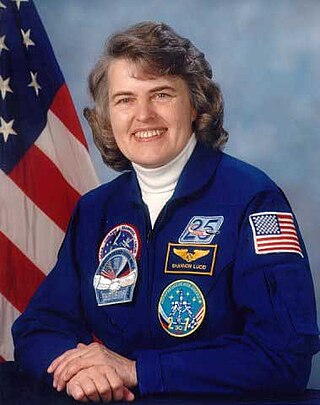
Shannon Matilda Wells Lucid is an American biochemist and retired NASA astronaut. She has flown in space five times, including a prolonged mission aboard the Russian space station Mir in 1996, and is the only American woman to have stayed on Mir. From 1996 to 2007, Lucid held the record for the longest duration spent in space by an American and by a woman. She was awarded the Congressional Space Medal of Honor in December 1996, making her the tenth person and the first woman to be accorded the honor.
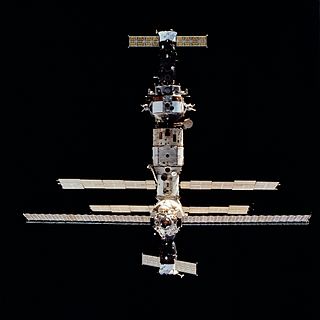
STS-63 was the second mission of the US/Russian Shuttle-Mir Program and the 20th flight of Discovery, which carried out the first rendezvous of the American Space Shuttle with Russia's space station Mir. Known as the 'Near-Mir' mission, the flight used Space Shuttle Discovery, which lifted off from launch pad 39B on February 3, 1995, from Kennedy Space Center, Florida. A night launch and the 20th mission for Discovery, it marked the first time a Space Shuttle mission had a female pilot, Eileen Collins, and the first EVAs for both a UK born astronaut, Michael Foale, and a US astronaut of African heritage, Bernard A. Harris, Jr. It also carried out the successful deployment and retrieval of the Spartan-204 platform, along with the scheduled rendezvous and flyaround of Mir, in preparation for STS-71, the first mission to dock with Mir.

STS-69 was a Space Shuttle Endeavour mission, and the second flight of the Wake Shield Facility (WSF). The mission launched from Kennedy Space Center, Florida on 7 September 1995. It was the 100th successful crewed NASA spaceflight, not including X-15 flights.

STS-76 was NASA's 76th Space Shuttle mission, and the 16th mission for Atlantis. STS-76 launched on 22 March 1996 at 08:13:04 UTC from Kennedy Space Center, launch pad 39B. STS-76 lasted over 9 days, traveled about 6,100,000 km (3,800,000 mi) while orbiting Earth an estimated 145 times, and landing at 13:28:57 UTC on 31 March 1996 at Edwards Air Force Base, runway 22.

John Elmer Blaha is a retired United States Air Force colonel and a former NASA astronaut. He is a veteran of five space missions aboard the Space Shuttle and Mir.

David Mathieson Walker, , was an American naval officer and aviator, fighter pilot, test pilot, and a former NASA astronaut. He flew aboard four Space Shuttle missions in the 1980s and 1990s.

Daniel Wheeler Bursch is a former NASA astronaut, and Captain of the United States Navy. He had four spaceflights, the first three of which were Space Shuttle missions lasting 10 to 11 days each. His fourth and final spaceflight was a long-duration stay aboard the International Space Station as a crew member of Expedition 4, which lasted from December 2001 to June 2002. This 196-day mission set a new record for the longest duration spaceflight for an American astronaut, a record simultaneously set with his crew mate Carl Walz. Their record has since been broken, and as of 2016 it is held by Scott Kelly, who flew a 340-day mission during Expeditions 43, 44 and 45.

Michael Richard Clifford was a United States Army officer and NASA astronaut. Clifford was a Master Army Aviator and logged over 3,400 hours flying in a wide variety of fixed and rotary winged aircraft. He retired from the U.S. Army at the rank of lieutenant colonel. He logged six hours of spacewalk time over three Space Shuttle missions. He was also one of the first people to conduct a spacewalk while docked to an orbiting space station: that spacewalk was conducted during STS-76, while docked at the Russian space station Mir.

Linda Maxine Godwin is an American scientist and retired NASA astronaut. Godwin joined NASA in 1980 and became an astronaut in July 1986. She retired in 2010. During her career, Godwin completed four space flights and logged over 38 days in space. Godwin also served as the assistant to the director for exploration, Flight Crew Operations Directorate at the Johnson Space Center. Since retiring from NASA, she accepted the position of professor in the Department of Physics and Astronomy at the University of Missouri.
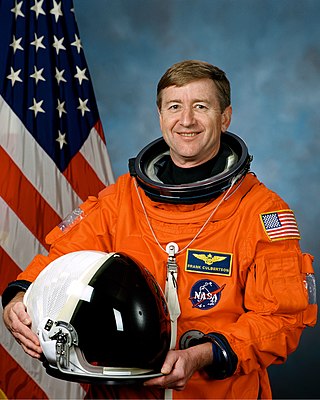
Frank Lee Culbertson Jr. is an American former naval officer and aviator, test pilot, aerospace engineer, NASA astronaut, graduate of the US Naval Academy, and member of the United States Astronaut Hall of Fame. He served as the commander of the International Space Station for almost four months in 2001 and was the only U.S. citizen not on Earth when the September 11 attacks occurred.

Charles Joseph Precourt is a retired NASA astronaut. His career in flight began at an early age, and spans his entire lifetime. He served in the US Air Force, piloted numerous jet aircraft, and piloted and commanded the Space Shuttle. Notably, he piloted or commanded several missions which involved docking with the Russian Mir space station and was heavily involved in Russian/US Space relations as well as the International Space Station collaboration. He also served as Chief of the Astronaut Office from 1998 to 2002. He retired from the USAF with the rank of colonel.

Kathryn Ryan Cordell Thornton is an American scientist and a former NASA astronaut with over 975 hours in space, including 21 hours of extravehicular activity. She was the associate dean for graduate programs at the University of Virginia School of Engineering and Applied Science, currently a professor of mechanical and aerospace engineering.

James Shelton Voss is a retired United States Army colonel and NASA astronaut. During his time with NASA, Voss flew in space five times on board the Space Shuttle and International Space Station. He also served as deputy of Flight Operations for the Space Station Program Mission Integration and Operations Office.

Carl Erwin Walz is a retired NASA astronaut currently working for Orbital Sciences Corporation's Advanced Programs Group as vice president for Human Space Flight Operations. Walz was formerly assigned to the Exploration Systems Mission Directorate at NASA Headquarters in Washington, D.C. He was the Acting Director for the Advanced Capabilities Division in the Exploration Systems Mission Directorate, and was responsible for a broad range of activities to include Human Research, Technology Development, Nuclear Power and Propulsion and the Lunar Robotic Exploration Programs to support the Vision for Space Exploration.

The Shuttle–Mir program was a collaborative space program between Russia and the United States that involved American Space Shuttles visiting the Russian space station Mir, Russian cosmonauts flying on the Shuttle, and an American astronaut flying aboard a Soyuz spacecraft to allow American astronauts to engage in long-duration expeditions aboard Mir.

Michael Reed Barratt is an American physician and a NASA astronaut. Board certified in internal and aerospace medicine, he served as a flight surgeon for NASA before his selection as an astronaut and has played a role in developing NASA's space medicine programs for both the Shuttle–Mir program and International Space Station. His first spaceflight was a long-duration mission to the International Space Station as a flight engineer on the Expedition 19 and 20 crew. In March 2011, Barratt completed his second spaceflight as a crew member of STS-133. Barratt made a second long-duration mission to the International Space Station as a flight engineer on the Expedition 70, 71, and 72 crew and also served as the pilot on the SpaceX Crew-8 mission.

Douglas Gerald Hurley is an American engineer, former Marine Corps pilot, and former NASA astronaut. He piloted Space Shuttle missions STS-127 and STS-135, the final flight of the Space Shuttle program. He launched into space for the third time as commander of Crew Dragon Demo-2, the first crewed spaceflight from American soil since STS-135 and became, together with Bob Behnken, the first astronaut in history launching aboard a commercial orbital spacecraft. He was also the first Marine to fly the F/A-18 E/F Super Hornet. His call sign is "Chunky", and he was sometimes referred to by this name on the communication loops.
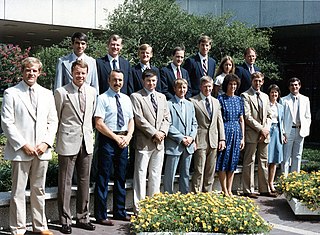
NASA Astronaut Group 10 was a group of 17 astronauts that were announced on May 23, 1984 and consisted of seven pilots and ten mission specialists. Although selected in 1984, no member of the group would fly until 1988 due to the Challenger disaster and the resulting grounding of the Space Shuttle fleet.





















